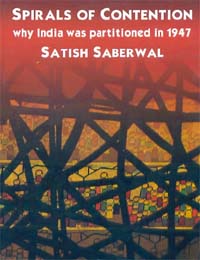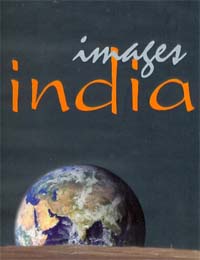|
NON-FICTION
India comes to the fore
M. Rajivlochan
 OF all the books released
in 2008, the singular best-seller in 2009 would be Nandan Nilekani’s Imagining
India: Ideas for a New Century (Allen Lane) on what India should do
in order to move forward in the present century. Now, that he has made
Infosys so dramatically successful, everyone would like to know his
recipe for making India great. There are no surprises here. Any
good-hearted liberal would give you the same list — create a more
inclusive society, allow greater encouragement to the young and the
entrepreneurial, increase grass-roots democracy, have stronger state
institutions, ensure better health services, provide superior
educational facilities, etc. Given Nilekani’s current iconic stature,
it is possible that our society and government take these oft-repeated
ideas seriously and actually begin to implement them. I am not too
sanguine, though. OF all the books released
in 2008, the singular best-seller in 2009 would be Nandan Nilekani’s Imagining
India: Ideas for a New Century (Allen Lane) on what India should do
in order to move forward in the present century. Now, that he has made
Infosys so dramatically successful, everyone would like to know his
recipe for making India great. There are no surprises here. Any
good-hearted liberal would give you the same list — create a more
inclusive society, allow greater encouragement to the young and the
entrepreneurial, increase grass-roots democracy, have stronger state
institutions, ensure better health services, provide superior
educational facilities, etc. Given Nilekani’s current iconic stature,
it is possible that our society and government take these oft-repeated
ideas seriously and actually begin to implement them. I am not too
sanguine, though.
 However, one of the most
insightful books of the year is Spirals of Contention: Why India was
Partitioned in 1947 (Routledge, Delhi) by Satish Saberwal on what
ails India as a nation and a state. His sociological investigations into
the history of the Hindu-Muslim interface in India come with an
understated but nevertheless dire warning: there are many similar
interfaces waiting to implode unless we make serious effort as a society
and a nation to strengthen our institutional systems and ensure that we
become a caring people not just in name but also in reality. Tracing the
roots of Partition deep into the past millennia of Indian history, he
takes us beyond the usual causes of Partition that confidently blame the
colonial government and the miscalculations of political leaders.
Sectarian ideologies have embedded themselves in complex ways in the
secular stresses of our society, he warns. Mere exhortations for
peaceful co-existence and mutual respect or better education and health
may not be enough to separate the two. However, one of the most
insightful books of the year is Spirals of Contention: Why India was
Partitioned in 1947 (Routledge, Delhi) by Satish Saberwal on what
ails India as a nation and a state. His sociological investigations into
the history of the Hindu-Muslim interface in India come with an
understated but nevertheless dire warning: there are many similar
interfaces waiting to implode unless we make serious effort as a society
and a nation to strengthen our institutional systems and ensure that we
become a caring people not just in name but also in reality. Tracing the
roots of Partition deep into the past millennia of Indian history, he
takes us beyond the usual causes of Partition that confidently blame the
colonial government and the miscalculations of political leaders.
Sectarian ideologies have embedded themselves in complex ways in the
secular stresses of our society, he warns. Mere exhortations for
peaceful co-existence and mutual respect or better education and health
may not be enough to separate the two.
Unlike Saberwal, Arvind
Panagariya has little patience with the problems of the past. Taking a
naively liberal view of India’s economic policies during the past 50
years in India The Emerging Giant (Oxford University Press),
Panagariya relates the economic growth of India to the changes in the
economic policies of the government. People’s own efforts at
enrichment, their problems caused by poverty and exploitation and the
abysmal condition of our government institutions have little value for
Panagariya.
 If India will not grow faster than China in the future, he
predicts, it is because the government does not force the people to be
competitive enough through its economic policies. Panagariya, of course,
ignores the fact that much of the current growth, either in China or in
India, is because the farmers and the poor subsidised the growth of the
rich in unimagined ways and the principal role of the state was to
control the upsurge of any discontent and siphon away the wealth of the
poor in order to hand it over to the rich. As a historian, I find it
interesting that with all the data dredging that the current
computer-assisted economic research allows, Panagariya had no inkling of
the economic crash that hit India in late 2008. If India will not grow faster than China in the future, he
predicts, it is because the government does not force the people to be
competitive enough through its economic policies. Panagariya, of course,
ignores the fact that much of the current growth, either in China or in
India, is because the farmers and the poor subsidised the growth of the
rich in unimagined ways and the principal role of the state was to
control the upsurge of any discontent and siphon away the wealth of the
poor in order to hand it over to the rich. As a historian, I find it
interesting that with all the data dredging that the current
computer-assisted economic research allows, Panagariya had no inkling of
the economic crash that hit India in late 2008.
Filling up an important
gap in the insights offered by Panagariya is Factory Girls: From
Village to City in a Changing China by Leslie T. Chang (Random
House). This is an interesting book by a journalist on the girls who
have made factories profitable in China. The over 130-million-strong
migrant worker population in China is mostly made up of women. So why do
they leave their homes? Chang follows the life of two young women —
one that is still stuck to the factory floor and the other who has risen
to join the management ranks. Both are clear that even the humiliating
and back-breaking life in the town is preferable to the misery of living
in villages and following outdated customs. The government currently is
totally in the hands of factory owners. The local newspapers practise
what Chang calls ‘journalism as extortion’. The workers are left to
fend for themselves. But each of them nurtures a gleam of hope — that
in the dog-eat-dog world of modern China, there is a possibility for
everyone to make it big while the previous system set strong limits on
who could rise above their station in life. It is this hope that drives
the world today.
 Sudhir Venkatesh, a
sociologist by profession, tells us the inside story of the American
poor in Gang Leader for a Day (Penguin). This book is the outcome
of his sociological research into the underground culture and economy of
a gangster-ridden urban residential complex. It is a violent world,
ridden with disease and tensions. Bartering favours — sexual or
otherwise — is a normal way of life and not always for illegal deeds.
While documenting all this, Venkatesh has come up with a perfectly
voyeuristic book that shows us the working of the drug lords and their
minions. Their personal foibles, friendships and enmities, their private
tensions, family structure and much more are described here. Most of the
gangsters don’t even make enough money to live independent of their
mothers. Sudhir Venkatesh, a
sociologist by profession, tells us the inside story of the American
poor in Gang Leader for a Day (Penguin). This book is the outcome
of his sociological research into the underground culture and economy of
a gangster-ridden urban residential complex. It is a violent world,
ridden with disease and tensions. Bartering favours — sexual or
otherwise — is a normal way of life and not always for illegal deeds.
While documenting all this, Venkatesh has come up with a perfectly
voyeuristic book that shows us the working of the drug lords and their
minions. Their personal foibles, friendships and enmities, their private
tensions, family structure and much more are described here. Most of the
gangsters don’t even make enough money to live independent of their
mothers.
Ather Farouqui continues
with his self-chosen task of documenting the complex position of Muslims
in the 21st century. In Muslims and Media Images: News versus Views (Oxford
University Press), he brings together 18 papers written by scholars,
activists, media personalities on how Muslims are portrayed in the
media. The papers deal with diverse issues such as "what is a
Muslim", "how do Indian Muslims deal with their image in the
popular media". The conflicts within the Muslim community over
their portrayal in the media too come in for comment.
 Alice Albinia’s
historical research weaves through literature, travelogue and sociology
to bring before us five millennia of history and politics that happened
around the Indus in Empires of the Indus: The Story of a River
(John Murray, London). She travels back in time to the earliest
civilised humans who gathered around the banks of the river and went on
to trade with Mesopotamia. She moves along the entire length of the
river to document the changes that happen across its geographical
spread. The reader would find here the biography of a river after which
Hindustan was named but which is not in India any more — other than in
name — thanks to a twist in our recent history. Alice Albinia’s
historical research weaves through literature, travelogue and sociology
to bring before us five millennia of history and politics that happened
around the Indus in Empires of the Indus: The Story of a River
(John Murray, London). She travels back in time to the earliest
civilised humans who gathered around the banks of the river and went on
to trade with Mesopotamia. She moves along the entire length of the
river to document the changes that happen across its geographical
spread. The reader would find here the biography of a river after which
Hindustan was named but which is not in India any more — other than in
name — thanks to a twist in our recent history.
The final book that we
have shows us how our country and its various parts look from space.
Images India by Ranganath R. Navalgund (National Remote Sensing
Agency) has beautiful A-3 size photographs reproduced to show diverse
aspects of India. The coastal region, swamps, mountains, smog-filled
winter atmosphere, drought-stricken portions of the Deccan plateau and
the flooded plains of Bihar and Utter Pradesh can be seen here. The
accompanying text explains how remote sensing helps understand the land
better and helps in policy making. For anyone with a budding interest in
the space sciences in India, this book is a godsend.
|